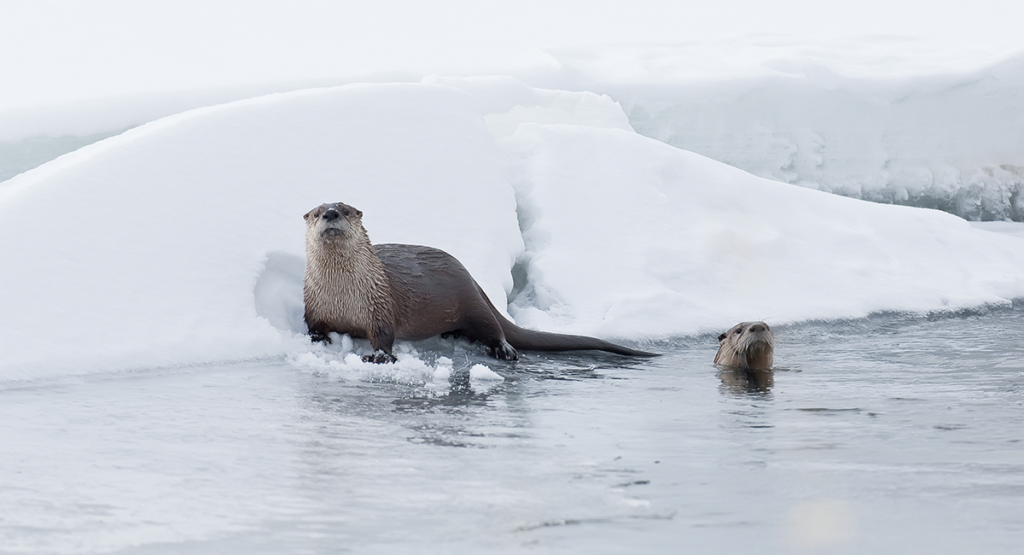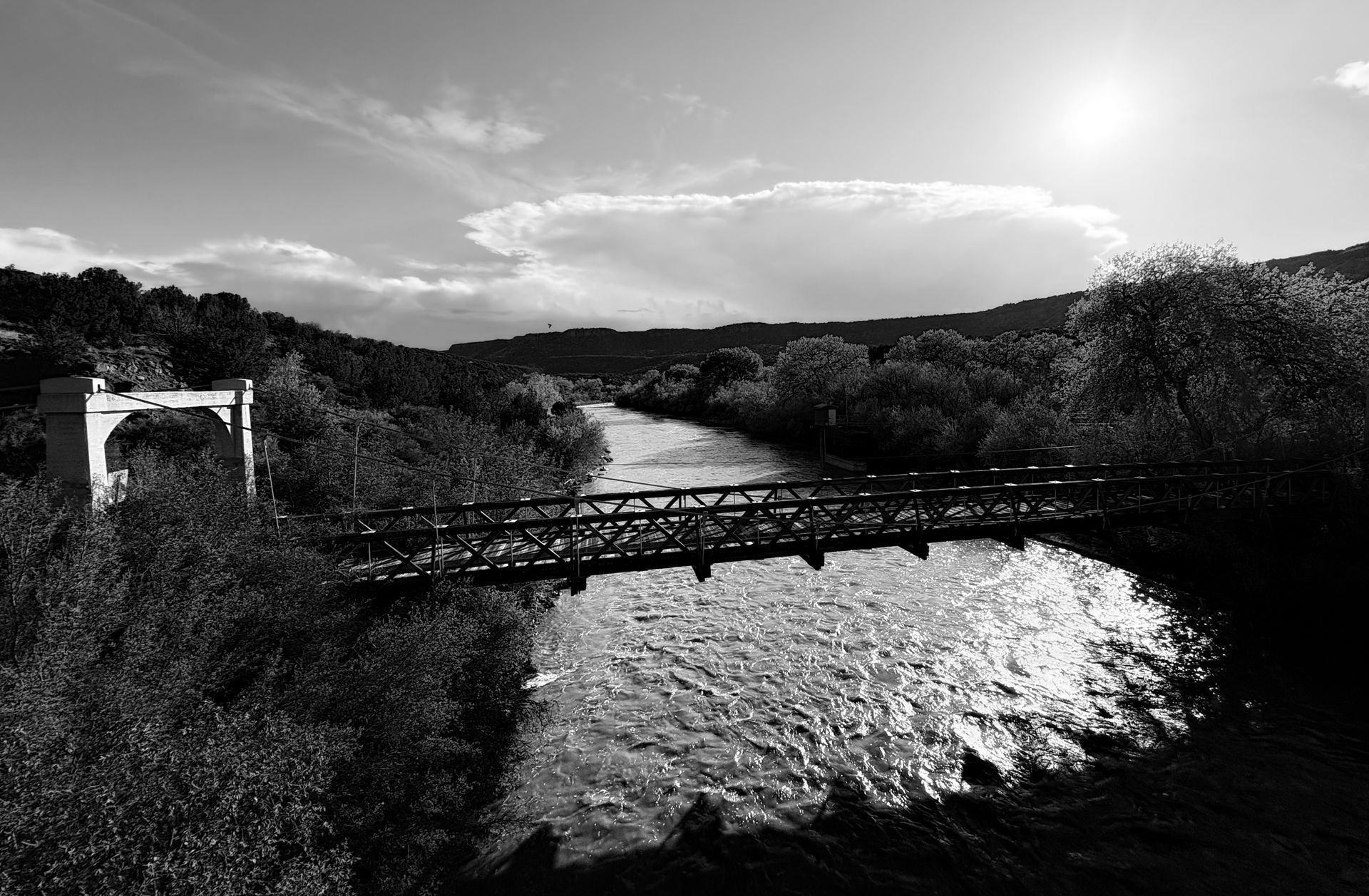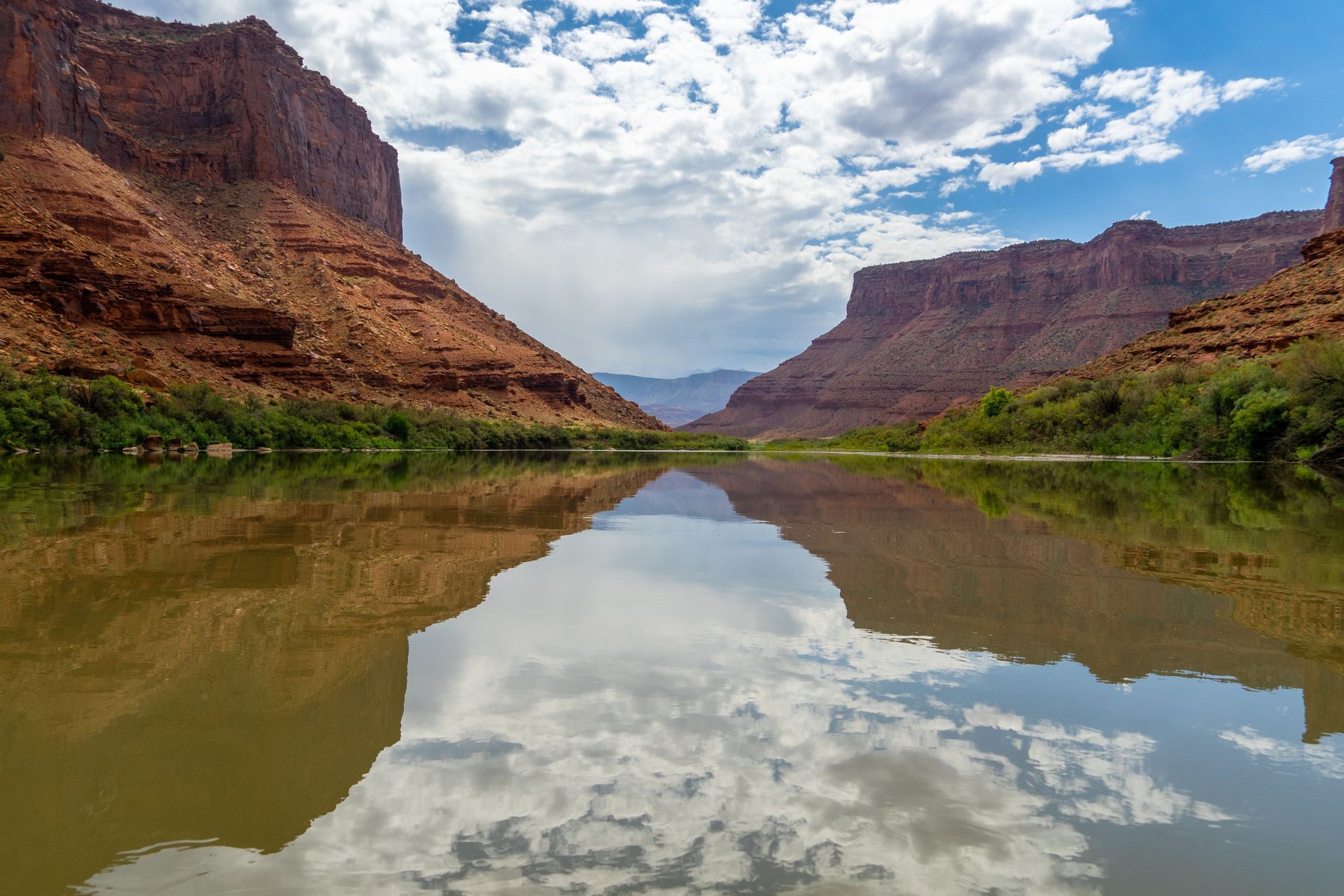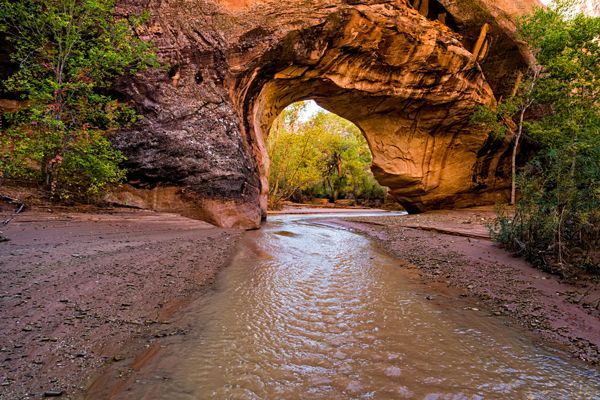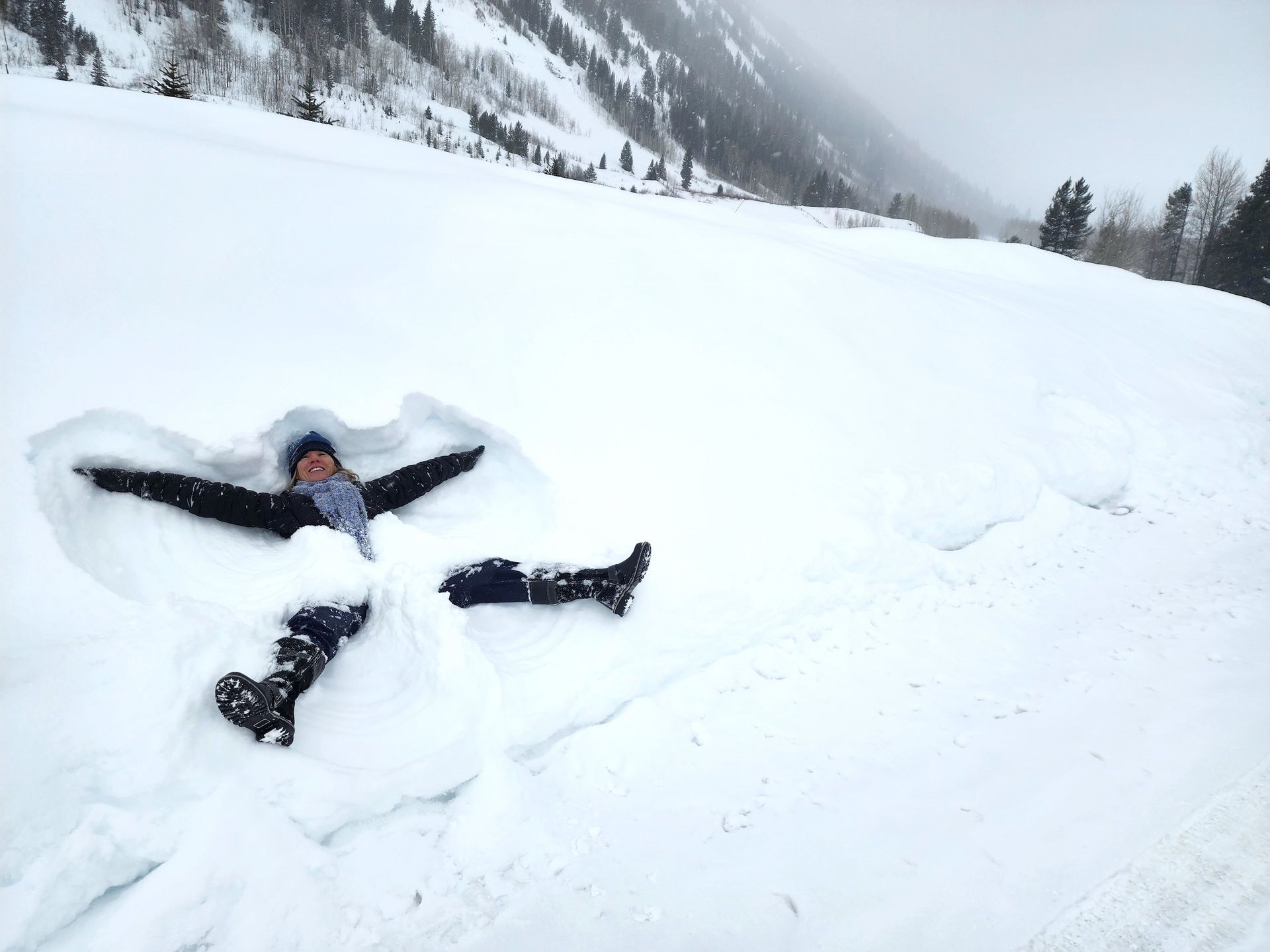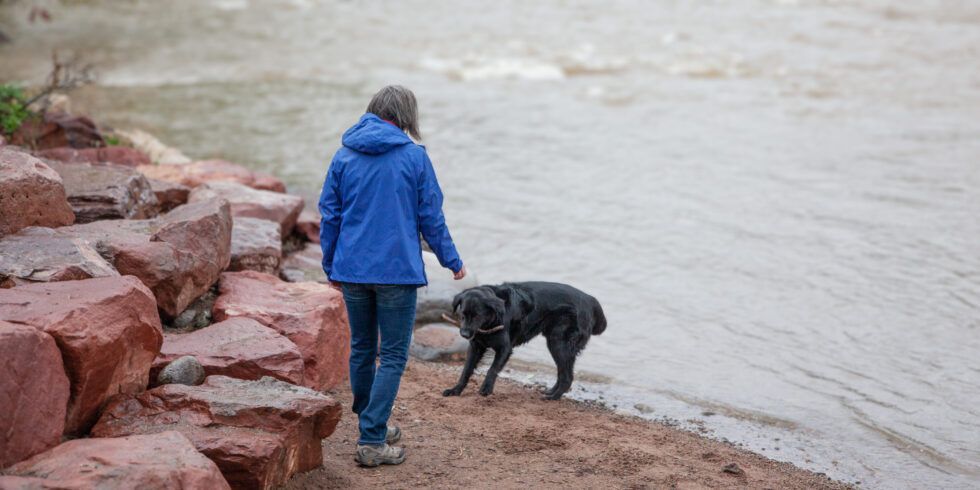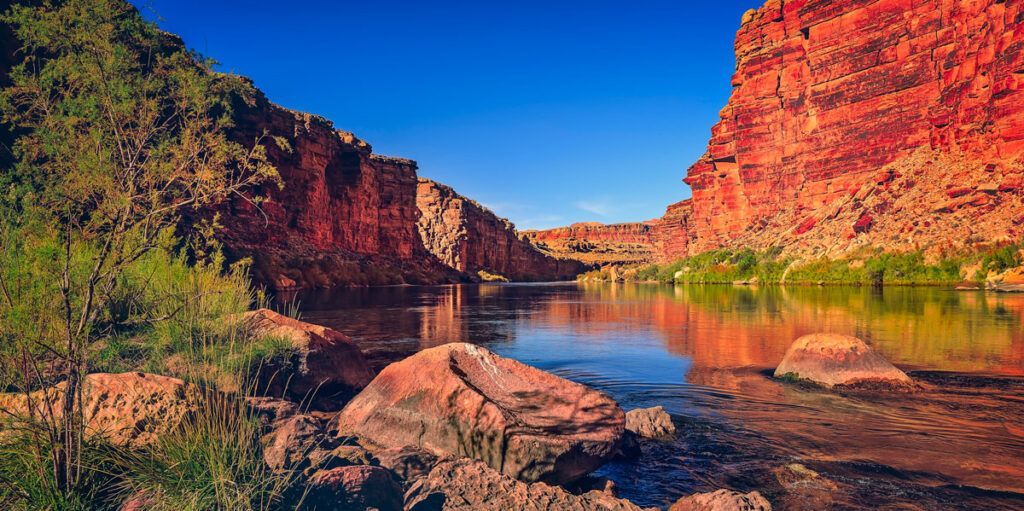Surviving the Chill: The Marvels of Cold-Weather Stream Life
Surviving the Chill: The Marvels of Cold-Weather Stream Life
Magic is happening out there
During winter, rivers and streams are often thought of less as we’re holed up in our homes, cozy under blankets next to a roaring fireplace. However, magic is happening out there. In the frigid embrace of below-freezing temperatures, bodies of water transform into icy landscapes, presenting a challenging yet opportunistic environment for plants and wildlife.
Plants
When the cold sets in and ice blankets the water’s surface, vegetation along rivers and streams starts winter dormancy. Many plants retreat into a state of suspended animation, conserving energy by losing leaves until the thaw of the spring. But, beneath the frozen surface, their roots continue to sustain life by holding onto water and waiting for warmer days. The submerged plants decompose, providing food for aquatic life during winter months.
Deep in the river beds, bacteria and other decomposers take advantage of the lower oxygen levels and begin to clean house. Leaves and other organic materials that fell in the Fall start breaking down into new sediment. This sediment will ultimately feed new plant growth life as the seasons change and warm up again.
Wildlife
For wildlife inhabiting the frigid landscape of frozen streams and rivers, adapting to winter’s icy embrace becomes a matter of survival. Aquatic species such as fish become sluggish, slowing their metabolism to conserve energy in the face of limited food. Trout seek out deeper pools where the water remains relatively unfrozen, providing a refuge against the cold. The cool part about cold-blooded fish like trout, salmon and pike is they can adjust their body temperature to the environment in which they live. Therefore, even at low temperatures, their bodies allow them to swim easily, even if they are a little slower.
Amphibians and some insects, on the other hand, may hibernate in terrestrial habitats surrounding the water bodies, awaiting the warmer temperatures of spring. They employ various strategies, from burrowing into the soil to seeking refuge in decaying vegetation, to endure the harsh winter conditions.
The icy cold
While winter poses challenges for both flora and fauna, the ice itself plays a crucial role in maintaining aquatic ecosystem health. Ice acts like an insulating layer, protecting the water beneath from extreme temperature fluctuations which could ultimately harm aquatic life. In some areas, where cold enough, the frozen surfaces of streams and rivers can offer more room to roam as they become winter highways for certain species. Animals like coyotes, foxes and elk can travel more efficiently in search of harder-to-find food or suitable shelter.
Truthfully, we think rivers and streams are just as, if not more, beautiful in the winter than in the summer. It’s captivating to think about the adaptability of nature during this time. It’s also important to remember that while most river projects and activities happen in the warmer months, the winter should not be forgotten. Important changes happen then, too. It’s essential to recognize and appreciate the resilience of plants and wildlife that endure and thrive amid frosting conditions. It’s up to all of us to keep our rivers healthy in every season so that when winter circles back around, plants and wildlife that depend on our rivers are set up to thrive.
Ideas to help rivers in the winter:
Avoid excessive use of de-icers and salts.
Conserve water.
Avoid clearing vegetation along riverbanks.
Support conservation organizations like Forever Our Rivers.
Practice responsible winter fishing.
Report and clean up pollution.
